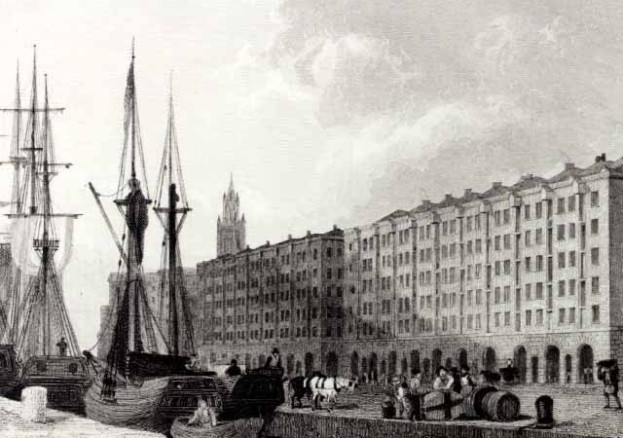
The town and its inhabitants derived great civic and personal wealth from the trade which laid the foundations for the port’s future growth.
The growth of the trade was slow but solid. By the 1730s about 15 ships a year were leaving for Africa and this grew to about 50 a year in the 1750s, rising to just over a 100 in each of the early years of the 1770s. Numbers declined during the American War of Independence (1775-83), but rose to a new peak of 120-130 ships annually in the two decades preceding the abolition of the trade in 1807. Probably three-quarters of all European slaving ships at this period left from Liverpool. Overall, Liverpool ships transported half of the 3 million Africans carried across the Atlantic by British slavers.
The precise reasons for Liverpool’s dominance of the trade are still debated by historians. Some suggest that Liverpool merchants were being pushed out of the other Atlantic trades, such as sugar and tobacco. Others claim that the town’s merchants were more enterprising. A significant factor was the port’s position with ready access via a network of rivers and canals to the goods traded in Africa – textiles from Lancashire and Yorkshire, copper and brass from Staffordshire and Cheshire and guns from Birmingham.
Although Liverpool merchants engaged in many other trades and commodities, involvement in the slave trade pervaded the whole port. Nearly all the principal merchants and citizens of Liverpool, including many of the mayors, were involved. Thomas Golightly (1732-1821), who was first elected to the Town Council in 1770 and became Mayor in 1772-3, is just one example. Several of the town’s MPs invested in the trade and spoke strongly in its favour in Parliament. James Penny, a slave trader, was presented with a magnificent silver epergne in 1792 for speaking in favour of the slave trade to a parliamentary committee.
It would be wrong to attribute all of Liverpool’s success to the slave trade, but it was undoubtedly the backbone of the town’s prosperity. Historian, David Richardson suggests that slaving and related trades may have occupied a third and possibly a half of Liverpool’s shipping activity in the period 1750 to 1807. The wealth acquired by the town was substantial and the stimulus it gave to trading and industrial development throughout the north-west of England and the Midlands was of crucial importance.
The last British slaver, the Kitty’s Amelia, left Liverpool under Captain Hugh Crow in July 1807. However, even after abolition Liverpool continued to develop the trading connections which had been established by the slave trade, both in Africa and the Americas.
